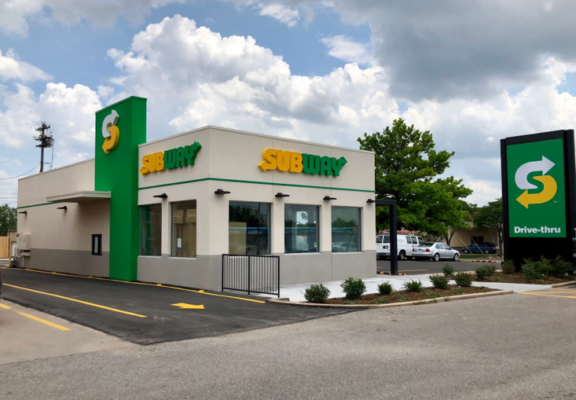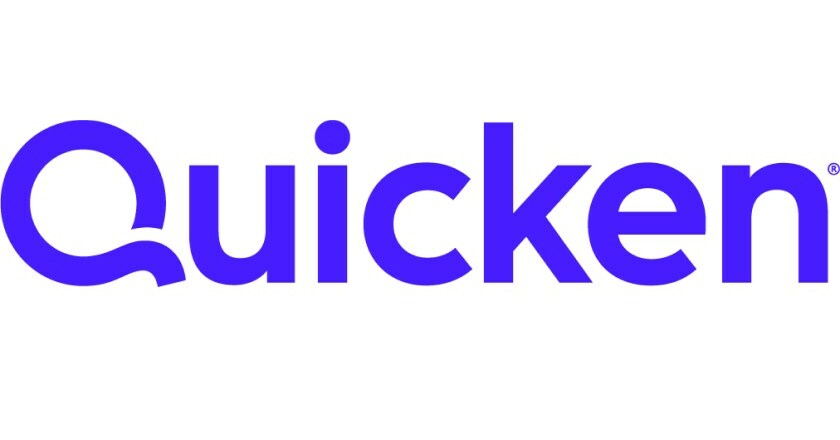Long before Subway was purchased by the private equity firm Roark Capital—a deal that closed April 30 with a price tag of $9.6 billion—an entrepreneurial member of the StartupNation community posed a question about the giant sandwich chain.
It was July 2006. The question to the StartupNation community forum was earnest and specific:
“I am curious to know what is the average profit a Subway restaurant owner would make monthly? Or if you know anyone who owns a Subway, how much do they make monthly? Or if you know anyone who owns a few Subway locations, how much do they make monthly?”
Within days, members of the StartupNation community began responding to the Subway questioner and discussing the cost of a Subway franchise and whether owning one was a good investment. Then, over the next 15+ years, they continued responding, layering questions on top of comments on top of compliments like, well, like a giant Subway sandwich:
They discussed and debated everything from Subway franchise cost to Subway franchise profitability to Subway rules, regulations and non-traditional locations.
AI + Data + CRM = more sales and happier customers.
Start or grow your business with the #1 CRM. Salesforce now has AI tools that helps you connect with your customers in a whole new way.
“The Subway Post”
The Subway Post,” as it came to be known at StartupNation, grew into multiple pages over the years as scores of community members—Subway franchise owners, Subway managers, Subway lovers, Subway haters, you name it—weighed in on the financials of owning an outlet of the famous restaurant chain.
Now, with Subway in the hands of Roark Capital after a Federal Trade Commission review, StartupNation decided to revisit “The Subway Post” and update any information we could. We also wanted to place Subway shop ownership in the context of franchising overall.
But, first, what about that original question? How much can you make from owning a Subway franchise?
Subway Franchise Profitability
Well, officially, Subway Restaurants, the franchise business operated by Doctor’s Associates, Inc., is careful not to predict what any single Subway location might earn in sales or clear in profits. If you’re looking to buy an existing Subway franchise, you may be provided the actual records of profit and loss for that specific store.
But a new location? Future profit projections? You’ll have to do your own research.
In fact, sprinkled throughout the paperwork that a buyer must complete when securing a franchise are phrases underlining that neither Subway nor its representatives can or should make any predictions or guarantees about profitability.
Here is one of those disclaimers, for example:
“We do not make any representations about a franchisee’s future financial performance or the past financial performance of company-owned or franchised outlets. We also do not authorize our employees or representatives to make any such representations either orally or in writing. However, if you are purchasing an existing outlet, we may provide you with the actual records of that outlet. If you receive any other financial performance information or projections of your future income, you should report it to the franchisor’s management. …”
Profitability Estimates from Posters
In responses to the original post in 2006, people identifying themselves as Subway franchisees or Subway employees familiar with franchise operations provided various profit estimates.
Some said franchisees should expect to see 20% profit margins. Tightly managed shops can push 25% cash flow, and ones with weaker operations might clear only 15% a year.
That means a location on the high end of the sales chart might throw off $150,000 a year or more. A struggling Subway in a low sales location might clear as little as $40,000.
One poster offered this advice:
The general rule of thumb is that if you really push it (work in the store yourself, keep food and labor costs as low as possible, and stay on top of loss prevention) you can reach a profit margin of about 25%. So, if you have a store averaging $10,000 a week in sales, you`ll make about $10,000 a month profit. Keep in mind, this is not easy and most Subway owners don`t do this well.
A poster who identified himself as “Subway Owner” was more bullish on the opportunity:
I own three Subway restaurants. I don`t want to make anyone mad, but some things posted here are either wrong or misleading. First off, I have been involved with Subway for 17 years, since 1989, and it is a good company.
The average store in the US does a little shy of $8,000/week. So for easy round numbers let’s say the average store does $400k/year. It is relatively easy to pull 20% profit if you keep an eye on the business. I averaged 22.63% for the first quarter this year and I was in my stores an average of 10 hours or less per week, so 20% is not that hard. But for the following estimate, let’s use 20% average profit.
If you have a store that is merely average you should profit in the ballpark of $80k/yr.
Now let’s say you were lucky enough to get a great location and you store does $15k/week (the area I am in has several stores that do this and much more in sales so it is very possible), well, you should be making in excess of $150k per year.
Now, one or two stores are not going to make you a multi-millionaire, but you can make a comfortable living without much of a time investment.
The powerfully simple way to stay on top of your finances. Budgeting, automation tools, portfolio analysis, tax reports, and more. For a limited time: 50% off on Quicken Simplifi and 25% off on other Quicken products.
Other posters pushed back, suggesting that profits down in the $25,000-$30,000 range were common and that to make a living off Subway franchising one had to own multiple locations. They warned that unless you could build up your own business of Subway franchises, you might just be buying a job, and in some cases buying a low-paying job.
Converting those 2006 dollars to 2024 purchasing power is fraught given the recent high inflation and the specificities of food costs and the restaurant business. But a straight conversion based on general inflation would put that range of earnings at $46,000-$125,000 in today’s dollars.
So, How Much Do Subway Franchise Owners Make?
So, how might we estimate today’s Subway franchise financials through research of available documentation? Well, let’s start with finding what we can about gross sales figures:
While Starbucks and McDonald’s battle for the title for the world’s largest restaurant chain based on total sales, Subway is right there battling for the top spot by number of outlets (almost 37,000 stores worldwide in 100 countries, with about half of those in the United States).
On average, a typical Subway store will gross about $420,000 a year, based on Subway’s own figures and industry estimates. While that may sound like a lot of money, $420,000 is a small per unit revenue compared with other restaurant franchise opportunities. And Subway’s average revenue per store actually decreased for much of the 2010s, until a turnaround in 2021-22.
So, if our working number is $420,000 a year in gross sales, where does that money go?
(Subway does boast among the lowest start up costs for franchised outlets. But we’ll look at the initial investment, such as the franchise fee, later.)
Subway Franchise Cost: Royalty Fees
Start with the Subway franchise royalties. The royalty fee is 8% of gross sales, while the advertising fee is 4.5% of gross sales, according to Subway’s Franchise Disclosure Document.
Like other franchise agreements, Subway’s includes other small, recurring fees as well, and they’re listed in that disclosure document. But the big fees are those two that add up to 12.5% of gross sales, and Subway is clear in its documentation about collecting those:
“Gross sales” includes all sales of every kind made from your restaurant. … The royalty is payable to us and is nonrefundable. … The royalty is payable weekly and is due on or before the Friday following the close of the business week which is usually Tuesday. You must submit signed forms to allow us to deposit drafts against your bank account for the full amount of the weekly accruals of royalties, advertising fees, and other amounts you will owe us.
Making Commerce Better for Everyone
Shopify is supporting the next generation of entrepreneurs, the world’s biggest brands, and everyone in between
Labor, Food and Other Costs
Beyond those royalty fees lurk the other, typical costs of running a food franchise. You will have rent and utilities, of course, or other expenses such as property taxes and building maintenance if you’re lucky enough to own the property. If your Subway target store is in a non-traditional location, you might have a concession fee as well.
Labor costs will depend on prevailing wages in your community, including any state or local minimum wage, as well as how competitive the labor market is where you set up.
You will have to account for how many hours you as the franchise owner can put in, but don’t count on your sandwich skills to be the difference maker. If financial success requires you to take too many shifts behind the counter, you might want to rethink the plan.
Food costs are likely to account for the biggest bite of your expenses. In the Subway franchise system, owners must buy from Subway-approved providers.
Subway cites quality control and purchasing power as the positives of this arrangement, and some owners of Subway franchises contributing to “The Subway Post” praised the system for helping them with account health monitoring and inventory monitoring. Others, however, pleaded for more flexibility, questioning Subway’s “eat fresh” slogan and saying they could source better ingredients at a fairer price than those mandated by Subway corporate.
Put all those costs together, along with some other miscellaneous expenses, and you have a solid picture of what would come out of that average sales take of $420,000.
Your costs, again, would depend largely on your location and your management of the place. Your sales will also depend on location and the amount of competition, including from more locations in the Subway family.
Franchisees have complained when Subway grows its store count and suggest that Subway sometimes pushes for systemwide revenue growth over the account health of individual franchises. Instead of considering their current Subway franchises, they push new outlets even when a local area is oversaturated.
Some Subway franchisees complain about other corporate dictates as well. The latest is the demand by Subway that all franchises honor digital coupons in the app, something that about 10% of franchises had been declining to do on a consistent basis.
Expect More Friction and Higher Costs If Franchise Labor Change Goes Through
One Franchisee’s Numbers
A forum contributor who said he owned three Subway franchises broke his P&L financials down this way:
- Food: 33% (lowest store 30% and highest store 33%)
- Labor: 22% (lowest store 19% and highest store 22%)
- Rent: 9% (lowest store 3% and highest store 9%)
- Subway fees: 12.5%
- Utilities/Misc: 8.5%
- Profit: 15% (lowest store 15% and highest store 22%)
He also gave an insider tip about company-owned equipment: “I would also suggest financing your equipment instead of leasing. The average Subway lease comes out to +20% interest where as a traditional loan would be in the 5-8% range. Hope this helps!”
Rules for Subway Franchisee
As far as running the business, keep in mind that as a franchisee your freedom to operate is constrained by the terms of the agreement with the parent company.
Besides mandating food purchases and charging weekly royalty fees, Subway operates like most any restaurant chain with a franchise model. Subway has teams that help franchises get set up (a site selection team, for example) and teams that monitor franchise performance.
Subway employs what they call a Development Agent. A Development Agent, in Subway’s description, is “a local, on-site representative of the Subway concept” who will “provide local support not only throughout the application process but continued support as you operate your restaurant.”
Our StartupNation community posters had mixed views on these Subway DAs, as they called them. One poster gave this advice regarding DAs: “If you are considering Subway, talk to existing franchisees in the area and ask about their satisfaction with the DA of that area. Development Agents are also expected to ensure franchisees are operating within company guidelines by having field reps that inspect stores monthly. They do much more than just open stores.”
While another poster put it more succinctly: “There is tremendous variation among areas, with some local development agents being helpful, and some are downright terrible.”
Buying A Subway Franchise: Initial Franchise Fee
So, before you even get to the stage of making money from a Subway, you have to make in initial investment in the company. Fortunately, if you’re determined to pursue a Subway franchise, the company operates on a relatively low investment business model, and new or existing franchises are often available.
Subway sets table stakes at a net worth of $150,000 and liquid assets, or cash on hand, of $100,000 per location. That is what’s needed just to be considered for a Subway franchise role.
Subway Franchise Total Investment
Then, your initial investment starts with the initial franchise fee of $15,000. On top of that, you will need an estimated $207,000 to $477,000 to invest in your store, according to Subway’s own estimates. Your figure will depend on such factors as building size, configuration and location.
Keep in mind that any remodeling or renovation you do to your space must conform with Subway franchise guidelines. Some franchise owners have prepared their space ahead of time only to find out that Subway’s store design team did not consider them configured properly for franchised outlets.
So, with all that as basic background on the Subway franchise cost and on what Subway franchise owners might make, what’s next?
First, let us share a few thoughts from contributors to “The Subway Post.”
- It’s one thing to imagine owning your own business, but if you have never done it, you should think hard about all the responsibilities you’re taking on.
- Running a food franchise is a grind. And even though Subway provides training classes and support with things like inventory management tasks, the challenges of labor shortages and competition are real.
- The benefit of Subway is not in owning a Subway franchise so much as owning multiple Subway franchises. Posters say that multi unit owners get the most out of the experience.
On top of that, you should look hard at the future of Subway Restaurants itself.
Founded in Bridgeport, Connecticut, in 1965 by Fred DeLuca and Peter Buck (both now deceased), Subway went through a tough decade in the 2010s before turning things around.
In August 2023, Subway announced that it had reached agreement to sell itself to Roark Capital, a private equity firm that owns a bunch of other restaurant operators and franchises (including Subway rival Jimmy John’s.) Roark reportedly paid more than $9.55 billion for the sandwich chain.
In announcing its plans to sell itself earlier in 2023, Subway emphasized that, coming off a strong 2022 that saw its same-store sales climb 9.2%, its strategy was paying off.
“The management team remains committed to the future and will continue to execute against its multi-year transformation journey, which includes a focus on menu innovation, modernization of restaurants and improvements to its overall guest experience,” the company said.
The combination of fewer stores and higher sales per store stands as a point in favor of becoming a Subway franchisee.
Verizon Digital Ready: Providing Entrepreneurs the Skills and Knowledge They Need
Here are some other pros, followed by some cons:
Pros of owning a Subway franchise:
- Subway is an established brand with a large customer base, high loyalty among some of those customers and strong brand recognition.
- Subway provides franchisees with training, ongoing support, and access to resources such as marketing materials and operational manuals.
- Subway starts you off with relatively low franchise fees, so the Subway franchise cost is reasonable in comparison with other franchise opportunities.
- Subway allows some flexibility in creating menus to cater to local tastes.
- Subway has strong relationships with its vendors, which some franchisees tout as helpful in buying quality goods for reasonable prices.
Cons of owning a Subway franchise:
- As our forum contributors mentioned frequently, the Subway franchise royalty fee cuts into the profit margin.
- Subway franchisees say menu flexibility does not go far enough and that the standards imposed limit their ability to create unique menu offerings.
- Competition from other fast food outlets is intense, and even if Subway is no longer the largest restaurant chain in the world by number of outlets, some franchisees say there are still too many new franchises popping up.
- The fast food industry overall has high employee turnover, and Subway is no exception.
- The framework and rules that apply to Subway franchise owners can be limiting.
Principles of Starting a Franchise
Clearly, whether to pursue a Subway franchise is a complicated question full of the typical uncertainties that surround any business venture.
The same can be said, of course, for franchising in general.
With that in mind, we would like to leave you with another list that can help anyone considering a Subway franchise or any other franchise.
Franchising can be a great opportunity. But it has to be right for you.
Here are nine things to know about franchising. We based this list on this article about starting a franchise and this article about how franchising can help control your risks.
- Research the franchisor: Before investing in a franchise, research the franchisor’s history, financials, and reputation. Look for red flags such as lawsuits, bankruptcy, or negative reviews.
- Understand the franchise agreement: The franchise agreement is a legal contract that outlines the rights and responsibilities of the franchisor and franchisee. Understand all terms and conditions.
- Evaluate the franchisor’s support: A good franchisor should provide support in areas such as training, marketing, and operations.
- Consider the franchise’s profitability: Look at the franchise’s financials, including the initial investment, ongoing fees, and potential revenue. Be conservative when making projections.
- Know the franchise’s target market: Make sure the franchise’s target market aligns with your own interests and strengths.
- Research the competition: Look at the competition in the franchise’s market and evaluate how the franchise differentiates itself.
- Understand the risks involved: Like any business venture, there are risks involved in starting a franchise. Make sure you and have a plan to mitigate the risks.
- Talk to other franchisees: Get an idea of the experiences and challenges faced by other franchisees in the system.
- Get professional advice: Consider consulting with a lawyer, accountant, or franchise consultant. They can provide valuable insights and help you make an informed decision.
Conclusion
Since landing the StartupNation community forum in 2006, “The Subway Post” has not only remained relevant, but it has engaged entrepreneurs and the business-minded time and again. Thousands of Subway franchises have opened, closed or changed hands in that time, and Subway Restaurants has gone through its own twists and turns.
The original poster’s question—”What’s the average income of a Subway restaurant owner?”—was never answered down to the dollar. But the posters got close, and we hope this article has done the same for a 2024 reader.
We also hope we have provided a clear way of thinking about Subway franchise ownership and some useful tips about franchising in general.
This article was updated in May 2024.









